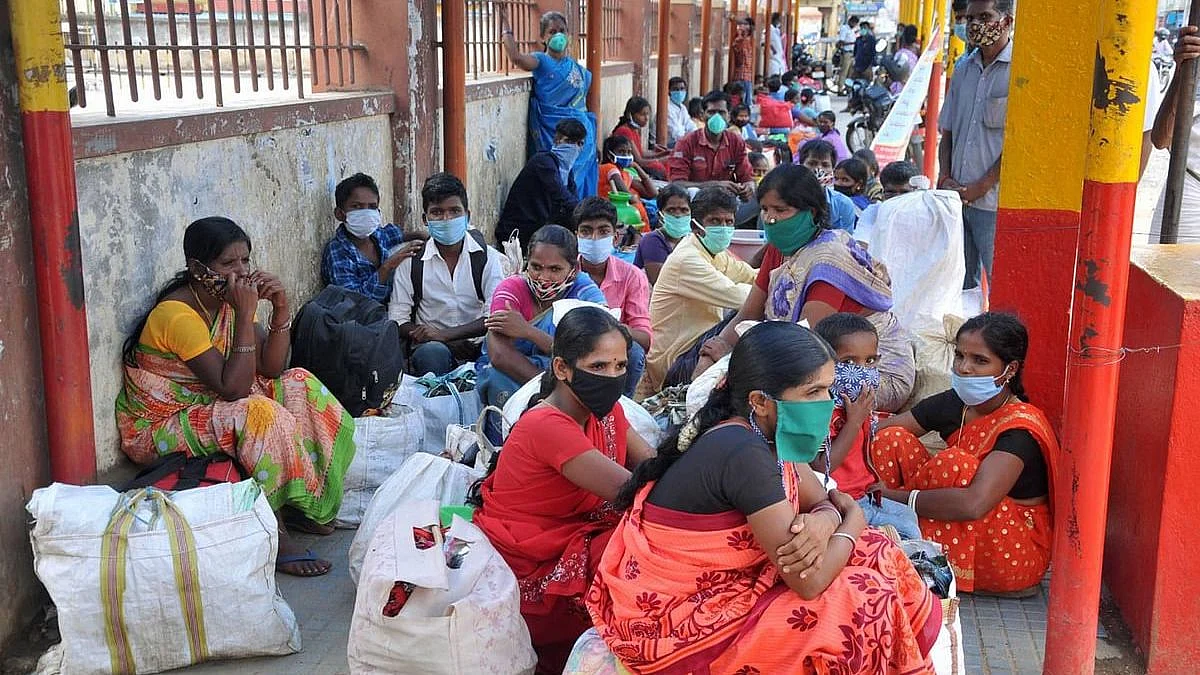Can Labour Reforms Help Women Migrant Workers During COVID-19?
The COVID-19 has led to disproportionate impact on the women workers, particularly women migrant workers.

advertisement
Over the last few years, India has witnessed a decline in its female labour force participation. From 31.2 percent in 2011-12, the number stood at 23.3 percent in 2017-18, according to the National Sample Survey Office. Besides, 90 percent women are engaged in low-paying jobs in the country’s huge informal sector, without adequate coverage through labour legislations and access to social protection.
The ongoing pandemic has made things worse as it has disproportionately affected women workers, depriving them of access to social protection and decent work.
Recently, the Ministry of Labour and Employment carried out labour reforms for simplifying the provisions of 44 labour legislations into four codes.
Women Migrants: An Integral Part of Urban Cities?
The migrant workers have been the backbone of the urban economy working as domestic helps, home-based workers, self-employed workers, etc.
The recent Periodic Labour Force Survey (PLFS) 2017-18 estimated that 51.9 percent women were engaged as self-employed workers, 31.7 percent were helpers in households, and 27.9 percent were engaged in casual labour. In urban areas, 34.7 percent women were self employed, 23.7 percent engaged in own account work, and 13.1 percent working as casual labour.
A closer look at the migrant women in the urban economy based on estimates derived from the PLFS reflects that women in urban areas are mostly engaged in community, social and personal services, manufacturing and trade, hotels and transport and communication which are worst hit due to the pandemic.
According to 2011 Census, out of around 45 million migrant workers, 7 million women migrant workers have migrated for work, employment, or business.
Since most of these workers are generally excluded from the contributory social insurance schemes, the loss of livelihood during the lockdown has further pushed them to poverty and misery.
Revisiting International Labour Standards for Response to Crisis
The International Labour Organisation (ILO) from time to time has maintained and developed a system of international labour standards for promotion of decent work and workers well being.
In 2017, the ILO emphasised the need to respect human rights as a response to crisis and outlined a strategic approach, including ensuring basic income security for those losing jobs during this period, along with enhanced social protection coverage.
Also, the Migrant Workers (Supplementary Provisions) Convention, 1975, states that migrant workers who have resided legally in the territory for the purpose of employment, shall not be regarded as being in irregular situation for the mere fact that they have lost their employment (for instance as a result of the economic impact of the COVID-19).
Can Labour Reforms Help?
The Occupational Safety, Health and Working Conditions Code, 2019 seeks to regulate health and safety conditions of workers in establishments with 10 or more workers. And so, it leaves behind many migrant workers, particularly domestic helps, home-based workers, and self-employed women workers, whose employment does not fall within an establishment.
Presenting its report on 11 February 2020, the Standing Committee on Labour informed the government about the gaps in the code, including the need for having a separate chapter on migrant workers.
With regard to women workers, the code does not have any special provisions. For instance, there’s a lot of ambiguity with regard to provision of crèche facilities. It is considered to be the liability of the employer, despite the Maternity Benefit Amendment Act, 2017 which mandates the establishment of crèches for organisations with 50 employees. The Standing Committee had pointed out that in case of small-scale industries, providing crèches for them are expensive, and so the government needs to step in.
It’s time that the code is revisited, particularly in the context of the pandemic and its impact on women migrant workers. There is ample scope for expanding the definition of the occupational disease, and including biological hazards caused by viruses and other harmful bacteria that affect people while they are at work as proposed by international labour standards.
The code need to be more gender sensitive – it needs to protect the rights of women migrant workers who are facing loss of income, loss of residence, psychological distress, and are deeply affected by the crisis.
(Dr Ellina Samantroy is a Fellow at VV Giri National Labour Institute. This is an opinion piece and the views expressed are the author’s own. The Quint neither endorses nor is responsible for them.)